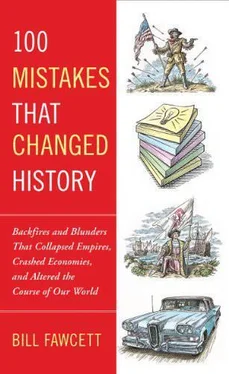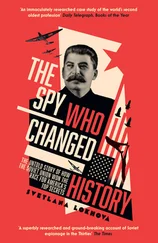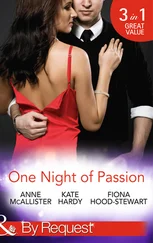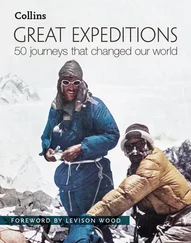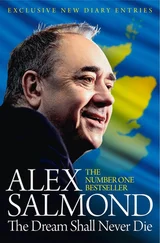This project ran parallel to other less than brilliant moves by the CIA, including hiring the mob to stage a hit on Castro. Still it got strong support from the vice president and the likely next president, Richard Nixon. But John Fitzgerald Kennedy won instead. This had two effects. The first was that Bissell had to sell the program to the new president. Kennedy was young and had a lot to prove. He was facing increasing pressure from the hawks in both parties (yes, there used to be Democratic hawks, really) and was inclined to support anything that made him look tough on communism. Using half-truths and not explaining too much, Bissell got a busy JFK to agree.
The second effect of Nixon losing was that Bissell no longer was working with any real supervision. Nixon had been active in the planning. Kennedy was too busy. Thus many things changed. The small group became a small army. A sneak landing became an amphibious attack. More than 2,000 disgruntled Cubans began to train in secret Central American bases.
Kennedy continued to agree, but only on the basis that the entire plan be secret and that the United States have deniability. It could not look like the U.S. government was involved at all. It was unclear who else he expected the world to blame for an amphibious landing and B26 bombing raids on its island neighbor. That summer the Miami Herald found out about the training camps. They were pressured to kill the story and did. At the end of October 1960, a Guatemalan newspaper ran a detailed story about Cubans training in their country. On January 10, 1961, the story about the Guatemalan training camps was featured on the front page of the New York Times . But the CIA and Bissell remained confident.
By February 1961, the Bissell invasion plan involved the U.S. Marines, two bomber wings of the U.S. Air Force (USAF), numerous U.S. Navy destroyers, and his intrepid Cubans. Strangely, there was no clear plan about what to do if the invasion did overthrow Castro. There was no government in exile or any one group ready to inspire the Cuban masses and form a friendly government.
Kennedy balked at the sheer size of the plan, and despite the CIA’s best efforts, he demanded it become a solely Cuban project without any direct involvement by the American military. Undeterred, Richard Bissell presented on March 11, 1961, a new plan confirming the president’s desires. This plan now called for a few thousand men to land, rally the Cuban people, and defeat the 200,000 soldiers of the Cuban army. The landing location was moved to a better beach, but one that was sixty miles from the mountains and safety if anything went wrong. A confident Bissell assured Kennedy that the plan would be a 100 percent Cuban affair and would almost assuredly succeed. Kennedy agreed and then was distracted by other affairs, one of them with Marilyn Monroe.
With less than a month to go, one element had to be added. With Kennedy pulling the USAF out, the invasion would need air cover and support. The Cuban air force was a joke by modern standards, but it had enough prop-driven aircraft to disrupt the landings unless neutralized. What the CIA devised was a wing of B26 bombers manned by quickly trained Cuban “volunteers.” No provision was made to explain how the Cuban rebels obtained a complete wing of heavy bombers.
At this point, the Pentagon got involved and examined the final plan. They were less than impressed, giving the landings alone a 30 percent chance of succeeding. But, not wanting to antagonize the new administration or the CIA, the Joint Chiefs officially reported to the White House that the plan had a “fair” chance of succeeding. Then the PR element of the CIA went into action, and press releases from a fake “Cuban Leadership Council” began to appear.
At the beginning of April, the 1,500 Cubans trained in Guatemala were shipped to Nicaragua and boarded a number of rusty freighters, which were later dubbed the “Cuban Navy” in the Cuban Leadership Council’s press releases. At this point, it also became apparent to all but the most unobservant that U.S. deniability was gone. A “defector” flying a B26 that was supposedly from the Cuban air force was put on display in Miami. But the man was not a Cuban airman. It was quickly noticed by some newsmen that, judging from what he did not know, he could not have been in the Cuban air force, and that the model B26 he had “stolen” was one not in use by Cuba. Castro certainly knew something was up. Kennedy, realizing this, gave orders canceling the bombing mission that was supposed to isolate the beach where the Cubans were to land.
Everyone seemed to know that the bombers would not show except the Cuban rebels on their ships. But even then, the Cuban rebels’ morale was so bad that the CIA handler in charge of the landing went ashore on April 17 along with the scuba divers who were to secure the beach. Onshore he found no defenders except a bogota full of partying locals.
The CIA agent radioed for the Cubans to land. Before they reached the beach, a single Cuban army jeep on patrol appeared and swept the beach with its spotlight. Likely, this was a standard procedure and as yet there really was nothing to see. But the CIA man opened up with his Thompson machine gun. The jeep fled and with it any chance of surprise.
When the boatloads of Cuban rebels reached the beach, it was noticed that no one had been appointed to command the landing. Once more, CIA personnel substituted for officers and directed the whole thing. When the escaped jeep reported the invasion, Castro was notified. He immediately ordered the nearest armed units to drive off the invaders. The units happened to be from the Cuban Military Academy. The cadets were armed and dispatched to the beachhead. One working airplane, a World War II Sea Fury, flown by the top pilot in the Cuban air force, Enrique Carreras, also scrambled and was soon strafing the beach. Pinned down by the cadets and the Sea Fury, the 1,500 Cuban expats and their CIA handlers dug in. More Cuban troops arrived, and soon it was difficult to run ammunition from the boats to the beach. By afternoon, the Cuban rebels’ ammunition was already running low. There was not going to be enough for a breakout from the beach. There was barely enough to maintain a defense.
That evening Bissell pulled President Kennedy from a formal reception. He explained to the president that the situation was dire. The only way to save the invasion was to release the fighters and bombers from the carrier Essex located nearby. It was at this point, after having approved every action taken so far, that Kennedy lost his nerve. He refused permission because he did not want the United States involved. The navy chief of staff who attended the meeting is said to have pointed out that it was already involved, but Kennedy refused permission. He suggested that the Cubans flee to the mountains as planned, but Bissell pointed out that the landing location had been changed and those mountains were now sixty miles away and on the other side of an increasing percentage of the Cuban army.
The fighting became more intense as more units of the Cuban army arrived on the eighteenth. Still the Cuban rebels held out on the beach. They had nowhere else to go. Kennedy did finally agree to one bombing raid by the “volunteer” Cubans in the B26s. American jets could accompany the bombers to discourage them being attacked, but were not to engage any ground targets. Unfortunately for deniability, the Cubans who were to fly the bombers refused to do so. They had seen how their comrades had been abandoned and were not willing to trust that the American fighters would be released to defend them. Eventually, the raid did occur. The bombers were being flown by that well-known Cuban unit the Alabama National Guard, dressed in their National Guard uniforms and operating on U.S. radio frequencies. Making things worse was that the rebel Cuban pilots were right. Someone forgot that the backup bombers in Nicaragua and the fighters in Florida were in different time zones. Four of the National Guard bombers were shot down when the fighters never appeared.
Читать дальше
